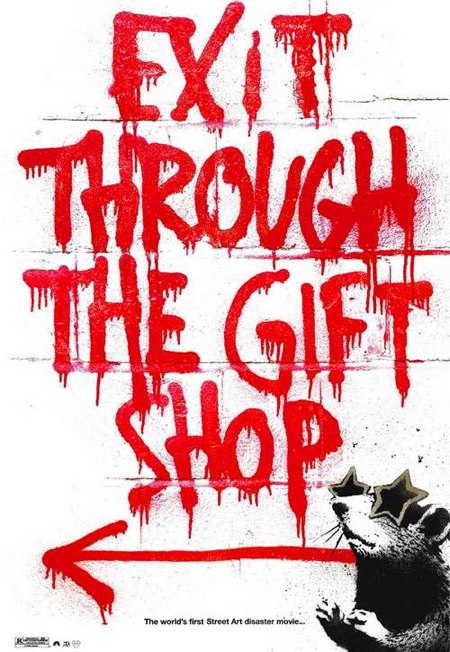Dir. Adam McKay
20102.0

By now, no one should be confused about what kind of a movie they're going to get from writer/director Adam McKay. His films function as wish fulfillment for Saturday Night Live devotees masochistically demanding that show's aesthetic be stretched well beyond its capacity and ignominiously retrofitted with indiscernible attempts at plot. They've been treated to a number of hit-or-miss (mostly miss) spinoff films over the years but McKay's special brand of sketch comedy indebted features manage to dodge the “spinoff” tag, the kiss of death for critical success. A former Second City member and SNL head writer, perhaps it is McKay's history as a socially minded comedian and his position as an occasional contributor to The Huffington Post that informs one of the more misguided forays into the realm of political comedy with his most recent feature The Other Guys. I wish I knew what someone like Arianna Huffington thought of Mr. McKay's pretensions of serious political commentary within this most plebian bromance.
Surely this must be a parodic farce. Following in the footstep's of last year's brilliant In the Loop and Jason Reitman's reportedly efficient condemnation of corporate decadence and emotional distance, Up in the Air, is it possible that we already have to suffer a lowest common denominator parody of the timely critiques of endemic political and corporate corruption those films proffered? Missing even the screwball sophistication of the Coen's Burn After Reading, The Other Guys is a philistine reworking of the “buddy cop” formula that is unfortunately convinced of its own nonexistent cultural criticism. Though billed as a parody, the film nails all the tropes of the genre without invention or traces of humor (as always with McKay, jokes are found between not within plot points) from the dealing-with-it-my-way psychological baggage of Mark Wahlberg's Terry Holtz or Ferrell's best good-cop-with-a-dark-past impersonation. These archetypes are only funny when they actively avoid acknowledging the thin vestments of their implausible personalities.
And avoid they do. Not just in a failed caricature of machismo defense mechanisms but in McKay's characteristic avoidance and downright fear of plot development. It's no wonder, really. His films predictably fall apart under the slightest demands of narrative. Try comparing the film's first half an hour with its last. In the first: an opening pyrotechnic-laden chase sequence (reminiscent of every action flick with a malnourished budget since the dawn of CGI) followed quickly by a frankly mind numbing series of police procedural sketches. In the last: a shootout massacre built up to by moments of “what the hell are they talking about” last minute plot points. Judging by the film's beyond-heavy-handed final credit sequence, McKay seems to think he's designed a conspiracy thriller and a scathing political satire in one laugh out loud romp of a good time. That he could be any further from the truth seems pretty much inconceivable.
McKay's conviction in satirical posturing and the pre-established precedent of a spoof comedy accounts for his blatant use of sexism and racism as tools for pandering to dick-in-hand loners and latent cynics. He makes limited attempts to account for these errors of taste but his defensive jokes are dated before they even leave the cinema's speakers. The film lobs so many softballs at easy targets, relies so heavily on Ferrell's brand of physical and verbal deadpan and comes up with so few noteworthy jokes (the best of which are a silent wrestling match at the wake of two accidentally suicidal cops and Michael Keaton's repeated references to 90s girl pop group TLC) that it's hard to believe that this is the same director who delivered the deliciously idiosyncratic Anchorman earlier this decade. That film, the cult American comedy of the last ten years just behind Superbad, had a couple of luxuries: existence outside the Appatow brand and audience expectations for McKay set just a notch below veteran disappointer Kevin Smith. That McKay can no longer cash in on these advantages certainly does not stop him from trying.
McKay's medium is sketch writing, a still under appreciated art form. The extent to which most people understand the liberties and restrictions of sketch comedy is in weekly doses of SNL. McKay writes well in short, discrete incidents but can't string his comedy (nor his drama) together sensibly in feature form. That he has tried is honorable but that he continues to make no improvement is disheartening. McKay is digging his own grave as a one trick pony. That his latest film will be the cause for a handful of guffaws is beside the point. The Other Guys shamefully prostitutes itself for easy laughs, cuts its losses and gets you out of theater before you start demanding a slide show presentation on the respective salaries of the Hollywood producers and stars involved in the kind of film so detached from its own lack of merit that it truly believes itself to be not only educational but entertaining.













